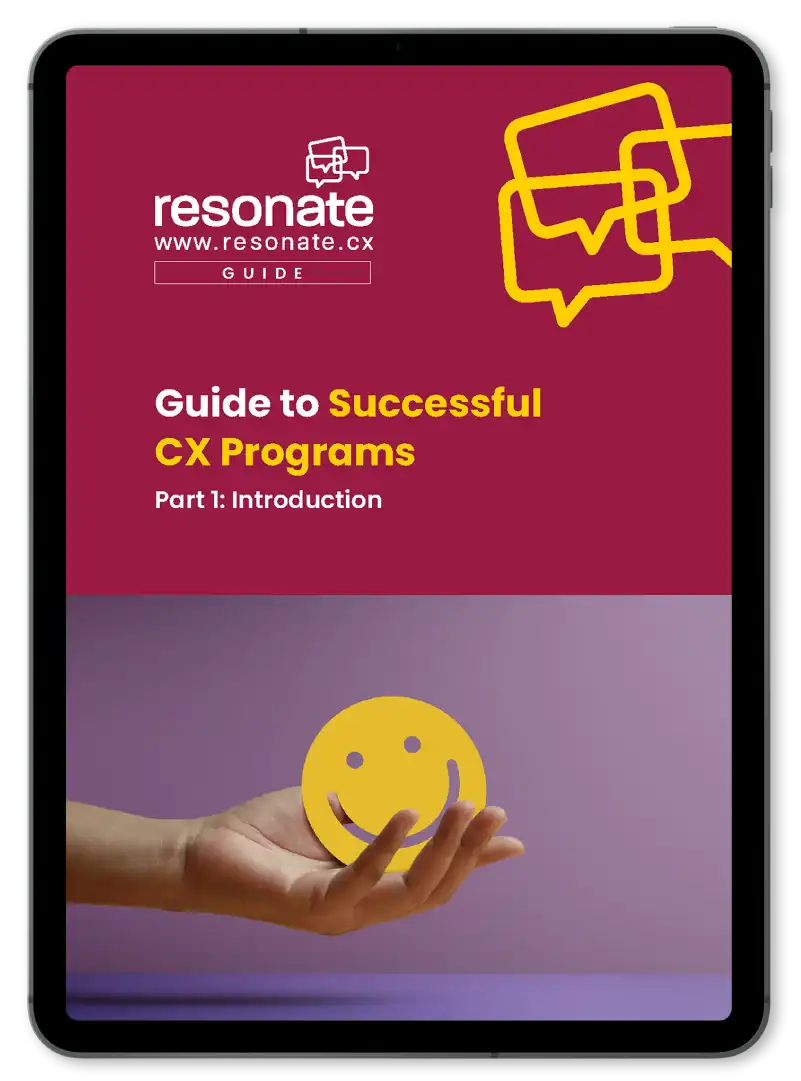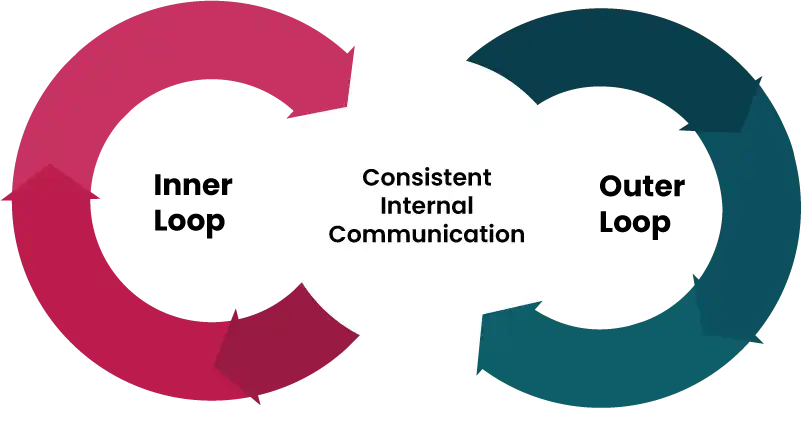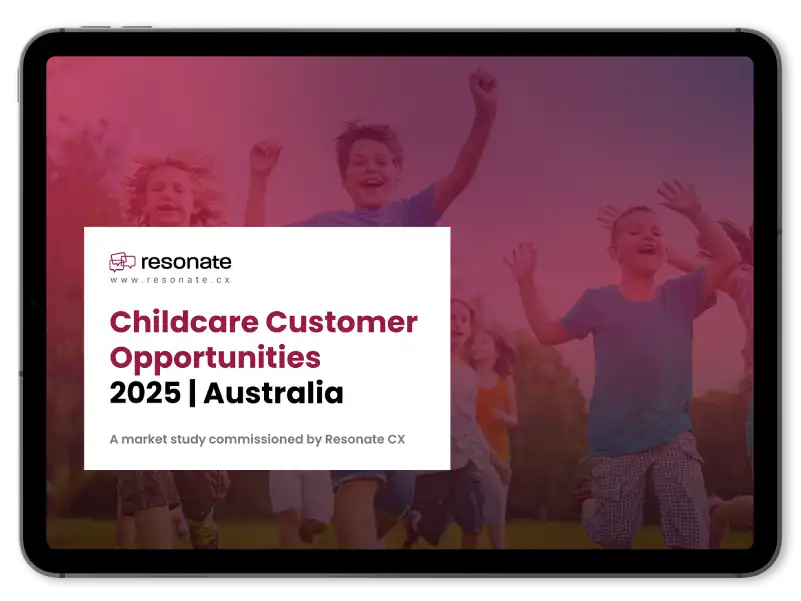Introduction to Voice of the Customer (VoC)
When a business is small, it’s easy to connect with customers and hear their feedback firsthand. But as the company grows, understanding customer needs gets harder. That’s where structured Voice of the Customer (VoC) programmes come in—they help keep a clear view of customer pain points at every stage of growth.
Voice of the Customer (VoC) refers to the systematic capturing of customers’ preferences, expectations, and experiences to inform business decisions. The methodology is now a cornerstone of modern business strategies, thanks to the better customer data gathering and processing capabilities provided by VoC applications such as the AI-Native Voice of the Customer solution offered by Resonate CX.
Gaining a better view of VoC allows businesses to see their own services through their customers’ perspectives, giving them an especially powerful way to enhance customer experience (CX) at all points of the customer journey. This, in turn, makes it simpler to provide product and service improvements that make sense for customers, increasing the satisfaction, loyalty, and retention necessary for business efficiency.

In this guide, you’ll learn:
Grow with a Winning VoC Strategy
The Core Components of a VoC Program
Collecting VoC Data: Methods and Channels
A well-structured Voice of the Customer (VoC) programme relies on accurate, timely, and diverse data collection methods to capture a holistic view of customer needs and experiences. While important for all organisations, a well-structured programme is helpful even in B2B businesses where complex stakeholder involvement makes CX management more challenging.
VoC programmes in both B2C and B2B industries rely on methods like large-scale surveys, social media listening, and transactional feedback to gauge customer sentiment. However, B2B enterprises must also account for multiple stakeholders and intricate decision-making processes in their VoC programmes. This complexity is emphasised in the book B2B Customer Experience: A Practical Guide to Delivering Exceptional CX, which highlights strategies for addressing the unique challenges of B2B customer engagement.
Leveraging multiple feedback channels is essential for accurately capturing customer sentiments, especially as business operations become more complex. Here are some key VoC data collection methods:
- Surveys. Surveys remain a cornerstone of VoC programs, providing both quantifiable and qualitative data on customer experiences. Structured surveys using systems like Net Promoter Score (NPS) can help businesses quantify customer loyalty as well as the likelihood of repeat purchases. Surveys with open feedback can also be used to find issues that may not show up on structured surveys. However, survey fatigue can skew the results of surveys, requiring businesses to balance frequency and relevance when gathering customer insights.
- Customer Interactions. Purchase histories, complaints, and all other customer interactions are opportunities to collect honest feedback, straight from the source. Analysing the totality of these interactions helps identify recurring pain points and areas for service improvement. However, these are often siloed in different departments and must be streamlined for better understanding.
- Focus Group Discussions. Moderated focus groups encourage customers to share insights collaboratively, providing businesses with diverse and useful perspectives on potential improvements. These discussions are particularly useful as they can uncover issues the development team may not have considered.
- Social Media Listening. Customers and employees may leave reviews on a company’s social media pages, providing an idea of various CX issues. Specialised review sites like Glassdoor and Yelp can provide further insights.
- Sentiment Analysis. Businesses now leverage AI-powered sentiment analysis tools to track customer sentiment on social media, forums, and review sites. This helps companies proactively manage brand perception even as it shifts and evolves.
- Customer Relationship Management (CRM) Systems. Businesses serious about improving CX at scale must integrate a customer relationship management (CRM) system. A CRM is essentially a comprehensive repository of all customers and potential customers, matched with standard data such as contact details, interaction histories, survey answers, and anything else that may be important for developing the customer experience. Having all this information standardised and in one place can be an immense help for quickly closing the feedback loop and uncovering wider CX patterns.
A successful VoC program integrates structured (e.g., multiple-choice surveys) and unstructured (e.g., open-ended responses on focus groups and social media) data to create a complete, actionable view of customer sentiment. The most effective programs don’t just collect feedback—they close the loop by turning insights into meaningful action.
Closing the Feedback Loop (inner loop)
Closing the feedback loop—the gap between gathering insights and taking action—is one of the most overlooked yet essential components of VoC programmes. Resonate CX’s VoC platform streamlines this process by providing automated, real-time alerts for critical feedback, enabling businesses to act swiftly and decisively. Issue resolution capabilities are integrated within the same platform, enabling a seamless response to concerns from the first point of contact all the way to full resolution.
Read ‘Using AI-Native VoC to Enhance Retail Customer Experience‘ for practical advice on leveraging Resonate CX’s AI-powered VoC program to quickly close the feedback loop.

Analysing Customer Feedback for Actionable Insights (outer loop)
To close the feedback loop, businesses first need to understand the data they collect. AI-driven platforms like Resonate CX make it easy by quickly spotting patterns and key issues, helping teams act faster and with more confidence.
How to Design and Implement a VoC Programme
Steps to Create an Effective VoC Strategy
Designing an effective VoC programme involves several key steps:
1. Identifying Goals: Whether it’s boosting product adoption, reducing churn, or improving customer experiences as a whole, having a goal gives businesses an idea of what success is, allowing them to conserve resources and make more coherent decisions.
2. Choosing Appropriate Tools: Tools must directly address challenges while also aligning with goals. AI-powered analytics, for instance, can save hours of manual analysis and quickly uncover wider sentiments contained in surveys and other types of unstructured data.
3. Monitoring and Iterating: Customer preferences and the contexts surrounding a business are constantly shifting, sometimes in unintuitive ways. This means that VoC programs should not be ‘set it and forget it’ initiatives. Regularly reviewing processes, measuring success, and making data-driven adjustments are all important for ensuring a VoC program’s lasting success.
Common Challenges and Solutions in VoC Implementation
As businesses grow and markets become more complex, effective VoC implementation inevitably faces challenges. These challenges include:
• Data Silos: Departments and business units can grow apart as an organisation expands, resulting in a lack of regular communication. Quite often, this leads to fragmented systems that prevent organisations from gaining a holistic view of customer feedback. Sincere efforts to change internal cultures and centralise data will give VoC programs a firmer foundation from which to start.
• Analysis Overload: With so much data available, decision-makers may find it difficult to set their organisation’s priorities. Going back to the business’s mission and vision statement and understanding which areas make the most impact can help narrow down priorities, helping organisations make the best use of limited resources.
The Future of VoC: Trends to Watch
The future of VoC is clearly going to be affected by ongoing developments in artificial intelligence (AI) and machine learning (ML). These technologies are already revolutionising VoC by enabling accurate, real-time sentiment analysis, even when drawing from complex, unstructured data like written customer surveys and even facial expressions. AI and ML tools are now closing the feedback loop faster than ever before, empowering businesses to offer consistently top-notch CX, regardless of how the market changes.
As these innovations and developments unfold, embracing novel strategies will be crucial for fostering efficient, meaningful customer interactions. Stay ahead of the curve by exploring how AI-native VoC strategies drive efficient yet meaningful customer interactions—only here on the Resonate CX Blog.
Conclusion
Developing a VoC strategy that is grounded on reliable data can be transformative for any business. However, it’s not enough to simply know what customers need. Businesses must set up a VoC program that emphasises closing the feedback loop as soon as possible. Thanks to Resonate’s AI and ML tools, businesses can close the feedback loop in real time, taking customer experience and loyalty to new heights and guaranteeing always-relevant innovation across all products and services.When you’re ready to take your VoC initiatives seriously, Resonate’s cutting-edge solutions will be there to unlock a better path to business growth. Request a demo today and explore Resonate’s VoC page to discover how to truly listen to the customer’s voice.









